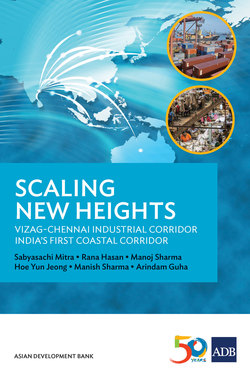Читать книгу Scaling New Heights - Manoj Sharma - Страница 4
На сайте Литреса книга снята с продажи.
Foreword
ОглавлениеIndia—the world’s third largest economy in purchasing power parity terms—has emerged as a global growth engine with promising prospects for the future. In order for India to sustain its growth momentum and translate economic gains into welfare improvements, it must accelerate its manufacturing-based industrial development.
South Asia is favorably positioned to link west and east Asia and plays a unique role in regional economic development and integration. With its location and prodigious demographic dividend, South Asia has enormous potential for economic prosperity. As India and its neighbors in the region strive for sustainable development, they will need to promote structural transformation, bridge the infrastructure gap, further integrate with the global economy, and absorb millions of new entrants into the workforce annually. Economic corridors as a development strategy can help India achieve these goals.
This book intends to aid policymakers in understanding the economic corridor development strategy that India is pursuing in its quest to spur manufacturing and create decent jobs. Economic corridors can be viewed as spatial planning tools that integrate and synergize industry, infrastructure, logistics and urbanization through careful planning over a long-term horizon. The Asian Development Bank’s support to economic corridor initiatives in India can also be a useful guide for other South Asian economies.
This book details the development of India’s East Coast Economic Corridor (ECEC) by focusing on its initial phase, the Vizag–Chennai Industrial Corridor. As India’s first coastal corridor, ECEC is based upon a distinctive port-led industrialization effort, differentiating it from other industrial corridors across the country. ECEC’s long coastline and strategically located ports provide an opportunity to develop multiple international gateways to connect India with global markets and value chains. Regulatory reforms that support private investment and trade are also given due attention.
I extend my appreciation to the team leaders of this initiative, Sabyasachi Mitra, Rana Hasan, Manoj Sharma, and Hoe Yun Jeong; the India Resident Mission; and South Asia Department staff and consultants for adding to our knowledge and understanding of economic corridor development.
This publication underlines the Asian Development Bank’s intention to provide developing member countries with knowledge products needed to maximize development effectiveness. This book is an outcome of the Asian Development Bank’s commitment to responding to the region’s infrastructure investment needs in order to help unlock its full economic potential. I am certain that this book will provide valuable policy insights to governments, academics, private sector and other key stakeholders across the region.
Wencai Zhang
Vice-President (Operations 1)
Asian Development Bank
